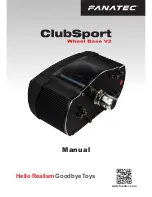
6
DKRCI.PI.RP0.C1.02 / 520H8794
© Danfoss A/S (RC-MDP/MWA), 2014-08
ENGLISH
Liquid Level Regulating principle
Fig. 3a:
LOW
System configuration
ICAD
Regulating principle
Low
Level Signal setup
AKS 4100
Fig. 3b:
LOW
System configuration
AKV/A
Regulating principle
Low
Level Signal setup
AKS 4100
Fig. 3c:
LOW
System configuration
AKV/A
Regulating principle
Low
Level Signal setup
AKS 4100
Fig. 3d:
HIGH
System configuration
AKV/A
Regulating principle
High
Level Signal setup
AKS 4100
Necessary connections (fig. 4, 5 and 6)
Terminals:
28-29 Supply voltage 24 V a.c. or d.c.
1-7
Signal from level transmitter type
AKS 4100/4100U
or
7-10
Signal from level transmitter type
AKS 41
36-37 Expansion valve type AKV or AKVA
(see note to the right)
or
23-24 Expansion valve type: ICM with
ICAD
13-14 Switch function for start/stop of
controller. If a switch is
not connected, terminals 13 and 14
must be shortcircuited.
Application dependent connections
(fig. 4, 5 and 6)
Terminals:
33-35 Relay for common alarm.
Installer can choose between
Normally Open (33-34) or Normally
Closed (34-35) circuits.
The relay will switch according to
the programmed setting.
25-27 Relay for low level limit.
Installer can choose between
Normally Open (26-27) or Normally
Closed (25-26) circuits.
The relay will switch when the set
value is passed.
30-32 Relay for upper level limit.
Installer can choose between
Normally Open (30-31) or Normally
Closed (31-32) circuits.
The relay will switch when the set
value is passed.
6-10
ICM valve feedback signal from
ICAD 0/4-20 mA
Note!
If AKV(A) is used, the power supply
must cover the AKV(A) coil wattage
additionally (see fig. 5).
AKV(A) Coil voltage must be the
same as controller supply voltage
AC or DC.
MASTER/SLAVE and I/O configuration
(fig. 7b and 7c)
When more controllers are connected via
CAN bus each end of the bus must be ter-
minated with a jumper between 15 and 16.
Control Panel (fig. 8)
The user interface of the control panel con-
sists of a multiline display and 4 individual
push buttons: Enter button, Page up
button, Page down button and Back
button.
Fig. 8 shows the Home display image,
which give the actual overview. This is the
starting point for entering into menus, and
you will revert to this image by pushing
1 – 3 times (depending on actual position).
Display (fig. 9)
The display itself show the state of
Liquid
level, Controller Mode
(controller On/
Off),
Valve opening degree, Lower level
alarm
(on = no alarm present) and
Upper
level alarm
(off = no alarm present).
Additional to the external connected alarm
audio/video sources, a Bell symbol will
flash in the upper right corner in case of an
alarm.
To see more details on system perfor-
mance and setting of parameters, 2
different main menu levels can be reached
by operation of the push buttons.






























